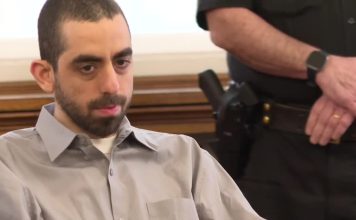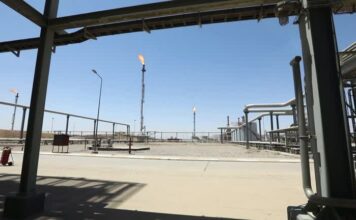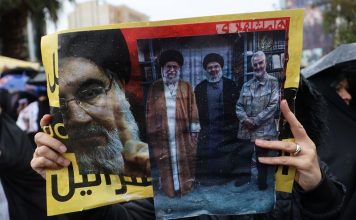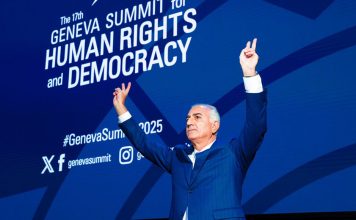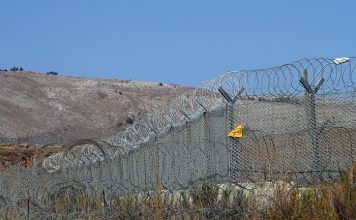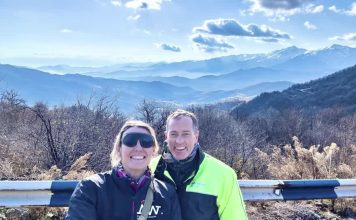By Parisa Hafezi
DUBAI, Sept 11 (Reuters) – Iran‘s rulers have intensified a clampdown on dissent nearly one year since the death in police custody of Mahsa Amini sparked protests which spiralled into some of the worst political turmoil since the 1979 Islamic Revolution.
HOW DID THE PROTESTS START?
Protests began soon after the Sept. 16 death of Kurdish Iranian woman Mahsa Amini, 22, who had been arrested by morality police three days earlier for allegedly violating Iran‘s mandatory Islamic dress code.
[aesop_image img=”https://kayhanlife.com/wp-content/uploads/2022/09/mahsa.jpg” panorama=”off” credit=”Mahsa Amini. KL./” align=”center” lightbox=”on” captionsrc=”custom” captionposition=”left” revealfx=”off” overlay_revealfx=”off”]
Amini, described as a shy person who minded her own business and stayed clear of politics, was detained as she stepped out of a train station in Tehran.
News of her death circulated on social media. Protests erupted at her funeral in her hometown Saqez and then spread across the country with demonstrators chanting “Woman, life, freedom” in a furious challenge to Iran‘s clerical rulers.
While Amini’s family said she had been killed by blows to her head and limbs, the authorities said she had died due to existing medical problems, further fuelling anger over her death.
WHAT DID PROTESTERS WANT?
With women and young people often at the forefront, protesters targeted symbols of the Islamic Republic, burning pictures of Supreme Leader Ayatollah Ali Khamenei and chanting “Death to the Dictator”.
[aesop_image img=”https://kayhanlife.com/wp-content/uploads/2022/10/2022-10-22T162004Z_1865738145_RC2F6X9B6R6I_RTRMADP_3_IRAN-WOMEN-GERMANY.jpg” panorama=”off” credit=”Ali Khamenei is depicted with a gun in his hand during a demonstration following the death of Mahsa Amini in Iran, in Berlin, Germany, October 22, 2022. REUTERS/Christian Mang” align=”center” lightbox=”on” captionsrc=”custom” captionposition=”left” revealfx=”off” overlay_revealfx=”off”]
Women, including schoolgirls, took off and burned headscarves, revolting against laws obliging women to cover their hair and wear loose-fitting clothes.
The protests were particularly intense in areas home to ethnic minorities that have long faced discrimination by the state, including Kurds in the northwest and Baluchis in the southeast.
Meanwhile, a growing number of women were disregarding the dress code. After a chess player and a climber competed without wearing headscarves other prominent women defied the authorities by violating the hijab law and voicing support for the protests.
Authorities have imposed travel bans and jail terms on several public figures from athletes to actresses.
QUELLING THE PROTESTS
Security forces restricted access to messaging apps and fiercely confronted the leaderless protesters using tear gas, clubs and, in some cases, live ammunition even as the protests rumbled on into the new year. A paramilitary volunteer militia, the Basij, played a prominent part in the crackdown.
Rights groups said over 500 people – including 71 minors – were killed, hundreds wounded and thousands arrested. Iran carried out seven executions linked to the unrest.
Authorities have not given any official estimated death toll, but said dozens of the security forces were killed in the “riots”.
Iran Regime Violations May Amount to Crimes Against Humanity – UN Expert
View this post on Instagram
DID ANYTHING CHANGE?
Buttressed by the Revolutionary Guards, the ruling elite appears to remain deeply entrenched in power despite its initial difficulties in subduing the protests.
Morality police largely vanished from the streets after Amini died in their custody. But as the protests fizzled they returned to streets and surveillance cameras were installed to identify and penalise unveiled women.
OPINION: Europe Should Empower Iranian People, Isolate Islamic Republic
The organizers of the Munich Security Conference [#MunichSecurityConference2023 (@MunSecConf)] decided not to invite representatives of the Islamic Republic to speak at this year’s https://t.co/y0j2R30Hb9…— Kayhan Life (@KayhanLife) February 18, 2023
EU Can Proscribe Iran’s Revolutionary Guards Without Delay, Lawyers Say
U.S. Weighs Sanctions for Chinese Companies Over Tehran Surveillance Buildup – WSJ
Authorities described the veil as “one of the principles of the Islamic Republic” and ordered both private and public sectors to deny services to any women who had discarded it, temporarily closing thousands of non-compliant businesses.
But with many Iranians saying the number of unveiled women continues to grow, the parliament is considering longer prison terms for anyone who flouts the dress code and harsher penalties for celebrities and businesses that violate the rules.
Outside Iran, Western countries imposed new sanctions on security forces and on dozens of Iranian officials over the protests, further straining already difficult ties.
Iranian Protest Songs Are Galvanizing the ‘Woman, Life, Freedom’ Revolution
Iran Detains Mahsa Amini’s Uncle as Anniversary of Her Death, Protests Looms
HOW WILL IRAN‘S LEADERS SHORE UP THEIR POSITION?
Recent actions by security forces suggest Iran‘s rulers intend to brook no flicker of dissent as the anniversary of Amini’s death approaches.
Activists have accused authorities of a campaign to intimidate and instil fear, arresting, summoning for questioning, threatening or firing people connected to the protests.
Journalists, lawyers, activists, students, academics, artists, public figures and family members of killed protesters, especially among ethnic minorities, have been targeted in recent weeks.
Iranian officials have blamed the unrest on foreign foes, notably the U.S. and Israel, raising the stakes for anybody facing arrest.
However, in cracking down they risk widening a rift between the clerical leadership and ordinary Iranians increasingly dismayed by an economy hammered by sanctions and mismanagement, a potential source of future unrest.
Iranian Authorities Arrest Women Activists, Suspend Professors Ahead of Amini Anniversary
Prince Reza Pahlavi : ‘The Alternative to the Islamic Republic is the Iranian nation’
(Writing by Parisa Hafezi; Editing by Angus McDowall and William Maclean)

